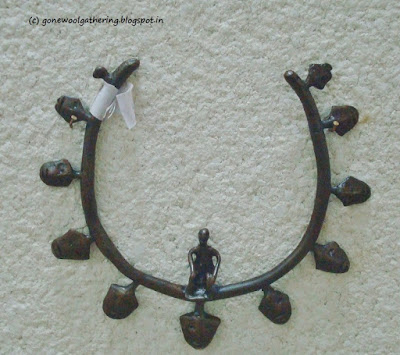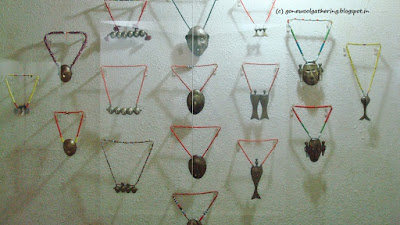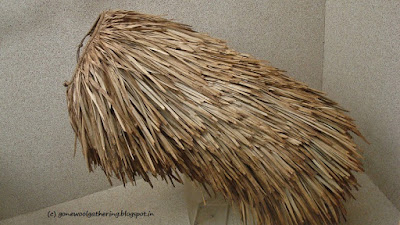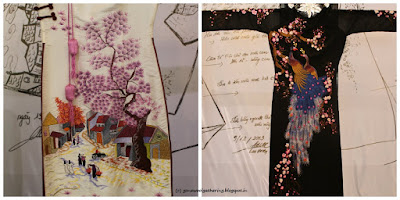Towards the end of 2013 I had visited some of the North Eastern states in India. I can't believe it's been two years. It was a very memorable trip as it was my first lengthy road trip. Almost 15 days of travelling around Arunachal Pradesh, Assam and Nagaland by road.
To be honest, it wasn't like my friend and I had much of an option. The train and air services are almost non-existent to & in these parts and bus services infrequent. I did have misgivings while starting out and it did have its share of hitches, but, I must say that I did enjoy myself thoroughly. The places were beautiful, the countryside we was breathtaking and the people were genuinely warm and welcoming.
I had always meant to write about that trip and I did highlight some features but I never got around to completing the posts. Hopefully, I can finish it now.
Better late than never, methinks! ;)
State Museum of Nagaland, Kohima
Museums in India, especially in non-Metro cities aren't exactly well maintained or displayed to maximum effect. It's unfortunate because our country has so so much to offer and showcase.
My expectations were fairly low when I went into the museum in Kohima. But, I am happy to say that I was pleasantly surprised. The museum grounds have stone sculptures displayed from the Eastern states which I unfortunately didn't photograph. Within the building, it was well lit, the artefacts displayed and labelled properly.
The museum covers the cultures and traditions of the many tribes that form Nagaland - way of life, clothes, jewellery, occupation etc. Also, that head-hunting was very literal unlike what we know today as 'professional headhunting'. ;)
There's a small section housing paintings/ art about and from Nagaland. I think these are fairly contemporary but interesting nevertheless.
If you travel to Kohima and like anthropology and history, don't miss out on this museum.
To be honest, it wasn't like my friend and I had much of an option. The train and air services are almost non-existent to & in these parts and bus services infrequent. I did have misgivings while starting out and it did have its share of hitches, but, I must say that I did enjoy myself thoroughly. The places were beautiful, the countryside we was breathtaking and the people were genuinely warm and welcoming.
I had always meant to write about that trip and I did highlight some features but I never got around to completing the posts. Hopefully, I can finish it now.
Better late than never, methinks! ;)
State Museum of Nagaland, Kohima
Museums in India, especially in non-Metro cities aren't exactly well maintained or displayed to maximum effect. It's unfortunate because our country has so so much to offer and showcase.
My expectations were fairly low when I went into the museum in Kohima. But, I am happy to say that I was pleasantly surprised. The museum grounds have stone sculptures displayed from the Eastern states which I unfortunately didn't photograph. Within the building, it was well lit, the artefacts displayed and labelled properly.
The museum covers the cultures and traditions of the many tribes that form Nagaland - way of life, clothes, jewellery, occupation etc. Also, that head-hunting was very literal unlike what we know today as 'professional headhunting'. ;)
There's a small section housing paintings/ art about and from Nagaland. I think these are fairly contemporary but interesting nevertheless.
 |
| Chair assembled using elephant bones |
 |
| Spiked armbands worn by both men and women of the Konyak tribe |
 |
| Brass choker worn by men of the Chang tribe |
 |
| Brass choker worn by men of the Chang tribe |
 |
| Head-hunting was the practise in many tribes. These are real trophies taken during head-hunting raids. By far the most popular display! |
 |
| Naome were worn by Konyak warriors & tiger's teeth pendants (far left) were worn by men from Tuensang district |
 |
| These coloured beads belong to women of the Konyak tribe |
 |
| Rain gear used to protect themselves from the torrential downpours while working in the fields or out of doors |
 |
| Another form of rain gear |
 |
| One of the paintings from the gallery |
If you travel to Kohima and like anthropology and history, don't miss out on this museum.
Note: Since the artefacts are behind glass cases, it's difficult to photograph. I wasn't able to take too many photos of the displays. But, I did find a great collection on the internet, incase you're interested in seeing more.
My other posts on the North East of India:


















